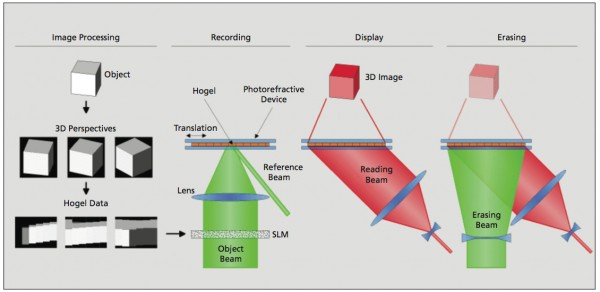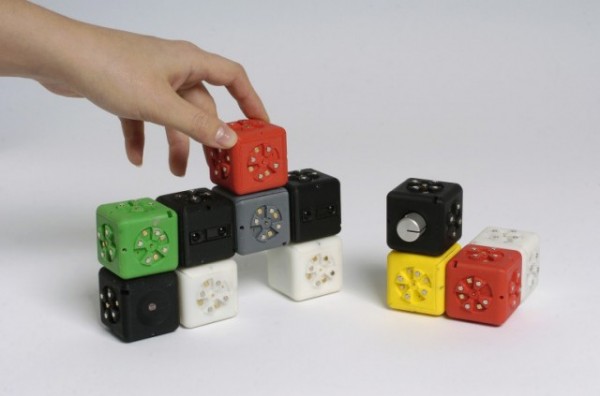…is a collection of data mining tools, all open-source and immediately accessible. Portable, too.
David Malouf, professor of Interaction Design at the Savannah College of Art and Design, exposes his ideas of Foundation Skills for IxD. Is motion one essential element that interaction designers should be expert at? Check the article Motion and The Clay of Interaction Design.
Here is a video from Interaction09 where he presents some of his early thought on foundations skills.
What is your take on it? Do you see motion playing an important role in your mastery of IxD?
I stumbled upon this while trying to write a comment to Camille’s big DIY post. Â The big dating site OKCupid has it’s own research department, which analyzes all the data from their users. There’s so much interesting stuff there. Like this: “How the daylight affects the appearance of attractiveness on pictures”

Helping the World Get More from Technology
You can help make technology easier to use and understand for people all over the world. You’ll work side by side with world-class technical writers, editors, programmer writers, and usability specialists when you join one of our teams within our User Experience organization. Every product we create is touched by these groups, all of whom generate a broad assortment of product help, user manuals, books, Web sites, usability studies, and prototypes that help our customers and partners reach their full potential.
User Experience Researcher
Are you interested in turning software products into world-class experiences for end users? If so, Microsoft’s UX Research group needs you! Our mission is to think end-to-end about the user experience both broadly and deeply. Giving end users an experience without problems isn’t good enough; we want the experience to be an immersive, pleasurable experience that is appropriate for each and every customer. We need to know our users inside out, by understanding their perceptions, desires, needs, frustrations, environments, and problems related to the Microsoft software, hardware, and services experience and beyond.
We need people who have a passion at the prospect of finding creative ways to evangelize the rich research data we have to both internal and external audiences and drive the results of those communications into the final experience.
Qualifications:
- Pursuing a B.A./B.S., M.S. or Ph.d. degree in Computer Science, HCI, Human Factors, or related field
- Knowledge of methods for gathering and analyzing UX research data
- The ability to solve complex UI design problems, take action, and drive for results in a multidisciplinary team
- Excellent communication and presentation skills, as well as self confidence
User Experience Designer
Innovate and improve some of the most popular software products in the world. As a User Experience Designer you’ll be responsible for driving cross-team collaboration with the world’s best user experience researchers, program managers, product planners, and developers from the early stages of planning through implementation. You’ll need to think strategically, be creative, and negotiate design solutions in relation to business goals. Using your abilities to identify new opportunities and generate innovative ideas, you will influence the design direction and make our already popular products even more successful.
Qualifications:
- Pursuing a B.A./B.S., M.S. or Ph.d. degree in Computer Science, HCI, Industrial or Graphic design, or related field
- Ability to apply strategic, business-building approach to user experience designs while integrating user research and usability evaluation throughout
- Strong problem-solving ability with balanced interaction and visual design skills
- 1-2 years experience work or classroom experience evolving design solutions from hand-sketched ideas to interactive Director, HTML or Flash prototypes.
- 1-2 years of practical work experience in JavaScript, Lingo, and ActionScript knowledge preferred
- Excellent communication and presentation skills as well as self confidence
Interested? Apply online at https://careers.microsoft.com Job ID 752518
Contact Annika Ushio (UID IxD alumnus) annikau@microsoft.com

Johnny Lee, king of the wiimote hacks, former Microsoftie and now at Google recently published a nice text titled The re-emergence of DIY vs Big Organizations . He presents his views on the state of DIY, the reduce cost of tools and advanced technology vs the large research organizations investing in research trying to come up with the next big thing. The article is available on his Procrastineering blog, and more recently it was reposted on Makezine.
I share some thoughts with him on the drive and motivation from the DIY community. The shear number of people spending countless hours to solve their important and not-so-important issues with the world is just mind-blowing. A large group of willing people can accomplish quite much, not only in the technology domain I would say.
My issue with the DIY world is that people can be pretty selfish from time to time, and I’ve experienced this a few times over the years (I might have acted like this myself): I have a problem, I think I’m important and the rest of world should listen to me or even help me resolve my problem. A human leech, sucking attention, other people work’s and resources for its own benefit. Don’t get me wrong, not every DIYer is like this, quite the contrary. But these DIY leeches don’t even say thank you when you just offered and sacrificed some of your blood to satisfy their self-esteem.
There are a few good things to learn from research and professional engineers/builders I think: probably some people have been through this before or tried to do the same thing as you. There are 6.7 billions people out there and most of them are quite clever in their own ways. We have been on the moon, built crazy infrastructures and dealt with a lot of human problems before. The internet is not the known universe, people have been trying, thinking and writing about a lot of stuff way before online search existed. So next time you think you have a big problem, think again and start digging in books, and talk to folks who are good at these things. You’ll be amazed I’m sure. Anyway this is diverging and is totally another story.
Back to Johnny’s text. The state of affairs he describes about large organizations vs innovation is very true I think. It is an issue of scale more than anything else I believe. Aligning the work and vision of a large group of people is really hard, even if people are well paid for it. Success and innovation are never guaranteed, even if you work really hard. On the other hand, large corporations can drive projects that are much bigger than what a group of 10-100 doers can do. Large corporations are resilient in their own ways, they often can afford to inject (and loose) millions in hope to maybe recoup some gains in the far future. Failure on an individual level is much more frightening. Without large mining operations, huge logistics supply chain, and major investments in new processes and materials there would be no 149$ Kinect, snazzy new iSomething or easy travel around the globe. Large and often nasty processes are needed for most of the stuff we have grown accustomed to. I’m not sure we can make do without large providers of technical prowesses.
So we need big orgs, and have to live with the issues associated with them the best we can. We also need DIY people and small group of independent tinkers who can poke the society to highlight problems or expose brilliant new opportunities. I hope both types will continue to push the boundaries in their own way, and cross-fertilize each others’ activities more and more.
What do you think? Are designers some sort of professional DIYers? Do we have to reinvent the wheel constantly (and blog about it) to make sure we understand it properly? Do you consider yourself a DIY person or more just like an user of friendly-technology? Are you making your real own stuff, or you are making stuff that other people tell you you can make?
/Camille
…or need to learn more, here’s ten nice video tutorials grabbed via Arduino.cc blog.
- Tutorial Series for Arduino: It begins.
Tutorial 2 for Arduino: Now with more Blinky Things!
Electrical Engineering Basics in Tutorial 3 for Arduino
Tutorial 4 for Arduino: Analog Inputs
Tutorial 5 for Arduino: Motors and Transistors
Tutorial 6 for Arduino: Serial Comm and Processing
Tutorial 7 for Arduino: I2C and Processing
Tutorial 8 for Arduino: SPI Interfaces
Tutorial 9 for Arduino: Wireless Communication
Tutorial 10 for Arduino: Interrupts + Debouncing
Cute.
…is a material that works like an automatic reflective Etch-A-Sketch, except with friggin’ laser beams instead of those knobs. This means it can act as a holographic photo plate that can be continuously erased and re-written with new images, in other words a holographic TV. So far it can do 2 frames per second and requires lasers powerful enough to make any evil mad scientist laugh maniacally.
[youtube=http://www.youtube.com/watch?v=ii_dZfrxQWE&feature=player_embedded]
After the spring cleaning of the research lab. We found a lot of PDAs, you know, those things that you saw some very-important-looking people fiddling around with in the nineties. They all have Microsoft Whatnot installed, and some of them actually haven’t been started before. Now here’s a competition, the prize is a beer or a can of Coke if you’re not in to alcohol. Come up with an idea what to do with these things is the name of the game. I don’t think any of them can connect to the Internet, at least with any reasonable speed, so there’s a design limitation. As the world is piling with junk technology, it’s always good to think how to re-purpose them. (I’m looking at you people, who change their iPhones every year to the new model. Put your ideas in the comments below.

… SRI International, which employs 1,700 researchers, has been busy on a number of things from radar, ultrasound imaging, remote surgery, and much more. It has also been incubating a few things that have turned into startups. My favorite example is Siri, which is an assistant for your iPhone. Apple bought that last year for a rumored $200+ million and I’ve been hearing rumors that we’ll see some of that work as part of the iPhone 5 launch later this year. More about Siri later.
I wondered “what is SRI International†up to now and do they have anything interesting cooking that could turn into another interesting startup?
More videos below
Via Techcrunch
Monome added a new awesome device to their pedigree of simple yet uber-slick controllers. The Arc is an unit of 2 or 4 large rotary encoder + push button with LED ring all around. As with the other controllers, the aim is to offer high-quality minimalist interfaces that are adaptable and very flexible. The Arc continues down this path. You ask why pay 500$ for two rotary encoders in a nice wooden case? Well, sure it is not cheap, but once you start using and programming the controller and its array of LEDs for feedback, the possibilities are almost limitless. The Arc provides top quality hardware and a robust API for realizing those simple yet super clever interfaces. The rings of variable intensity LEDs are an amazing canvas to develop new interactions.
Monome is very open and honest about its mission and pricing scheme.
we expect a lot of skepticism regarding our pricing, and we understand, given we live in an age where global economics can facilitate amazingly low prices. please understand that we’re making small runs of highly specialized objects for a relatively small market— we value design, we value materials, and we’re concerned with where things come from and where they’ll end up. we’re not interested in compromising these values to simply reduce costs.
Small is beautiful sometimes! Although not fully an open source hardware device, Monome is very open to the community and supports it extensively through open specifications and protocols. Here are a few videos showing the new Arc in use:
There is a good Q&A about the new Arc and its creator on CreateDigitalMusic.com By the way, we have a monome 40h (first version) in the Interaction Workshop if you want to experiment with it.
I came across the fontsinuse.com a while back and thought it had potential, and then came across it again this week. And I think the site is growing quite beautifully. Sure, there’s a lot of font porn, but also nice analysis on how the designers and typographers set the fonts they use. They cover all sorts of media—from packaging to web to print and more. Check it.





